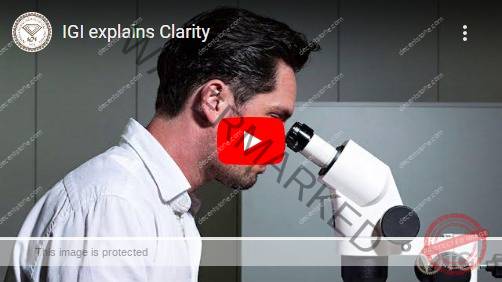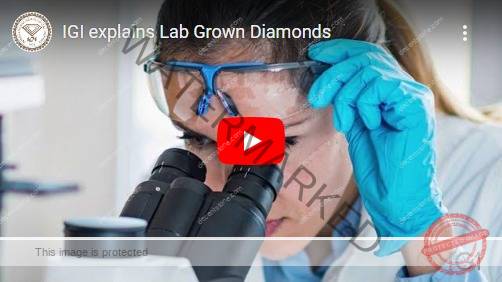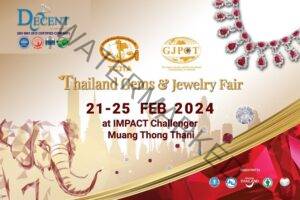รายละเอียดเพิ่มเติม
Over the past several years, the advent of gem-quality Lab-Grown colorless diamonds in the size and quality most consumers desire has resulted in an additional option for those looking for an alternative to mined diamonds. And with that additional option, more confusion about what’s what. So here’s our attempt to break it all down…
First off, let’s define what Lab-Grown Diamonds are. That’s simple, they’re diamonds. They are carbon crystal growth diamonds formed atom by atom, as are their traditional mined counterparts. Lab-Grown Diamonds are identical to mined diamonds sharing the same physical, chemical and optical properties as their natural counterparts.
The 4Cs stand for carat weight, color, clarity and cut. Diamonds are graded in each of these areas. Taken collectively, those grades determine a diamond’s value.

Your Diamond’s Creation
Your laboratory-grown diamond is chemically identical to every other diamond on earth. However, instead of mined diamonds, which formed beneath the ground billions of years ago, your diamond was grown in controlled laboratory conditions using sophisticated methods of chemical synthesis.
The most modern technology
There are two scientific approaches to diamond creation. The Chemical Vapor Deposition (CVD) process releases carbon from plasma. This involves superheating hydrocarbon gas in a vacuum to between 3,000-4,000C, at which point the carbon atoms begin to separate from their molecular bonds. Those atoms descend and land on a flat wafer of previously grown synthetic diamond and grow in vertical layers. This substrate is square for jewelry applications but the shape can vary for other applications in medicine, communications and technology.

The High Pressure High Temperature (HPHT) process replicates the natural conditions under which diamonds formed 100 miles below the surface due to subduction. A carbon source, a diamond seed and a metallic catalyst go into an octahedral cell. The cell is placed into a massive mechanical press where the contents are heated near 1,500 C and subjected to staggering pressure. The melting metal dissolves the carbon and the pressure causes precipitation to the diamond seed, growing a larger diamond. The level of pressure from these immense presses has been compared to what you’d experience if you balanced a jumbo jet on the tip of your finger.

When the growing process has finalized, rough CVD and HPHT crystals are sent to diamond cutting centers to be planned and polished.
Rough to polish
Diamond cutting is the art, skill and science of transforming a raw crystal into a polished, faceted diamond. As the hardest material known to man, cutting and shaping a diamond requires specialized knowledge, tools and skill.
1) Planning: This rough octahedron crystal is studied and its growth directions and inclusions are mapped.

2) Marking: Once the plan is determined, the crystal is marked for primary sawing.

3) Sawing: A carbon-fiber blade coated with diamond-grit makes the first cut. It will take several hours to saw this crystal into two pieces; each of which will become a polished diamond.

4) Bruting: The two pieces spin in opposite directions, grinding against each other to smooth the edges and create a round outline.

5) Polishing: A spinning wheel coated with diamond-grit is used for blocking, crossworking and brillianteering, the process of placing, shaping and smoothing all facets to final polish.

6) Inspection: Once finished, the diamond is thoroughly boiled in acid and examined to ensure that it meets the producer’s expectations and quality standards.

Diamond Grading
Following the diamond cutting process and prior to being sold loose or mounted into jewelry, diamonds are typically submitted to gemological institutions such as IGI for quality assessment. Four main factors are considered when judging a diamond’s quality and value. They are the diamond’s 4C’s: Carat weight, Color, Clarity and Cut.
IGI screens every diamond using state of the art technologies to determine naturally mined, laboratory grown or simulant origin. Experienced graduate gemologists conduct further assessment in controlled conditions, detailing relevant gemological characteristics according to the strictest international system.

Your diamond is exceptional and distinctive. No two diamonds are alike. Yet all diamonds have certain features in common that allow experts to compare and evaluate them.
Uniquely yours
The name diamond is derived from the ancient Greek “adamas” meaning unbreakable, untamed and unconquerable. Diamonds have been treasured as gemstones ever since they were discovered. In our modern age the word “diamond” continues to evoke images of elegance, style and glamour.
Diamond sparkles and dazzles. Diamond symbolizes purity and strength. And the story of your diamond is uniquely yours.

Diamond weight is expressed in carats. 1.00 carat equals 200 milligrams. Diamonds under 1.00 carat are expressed in ‘points.’ That means a 0.90 carat diamond is said to weigh “90 points.” You should know that two diamonds which weigh the same don’t always look the same size. To see examples, click above and “Learn With Videos.” You may also consult your jewelry professional, or contact us directly at igi.org.


















